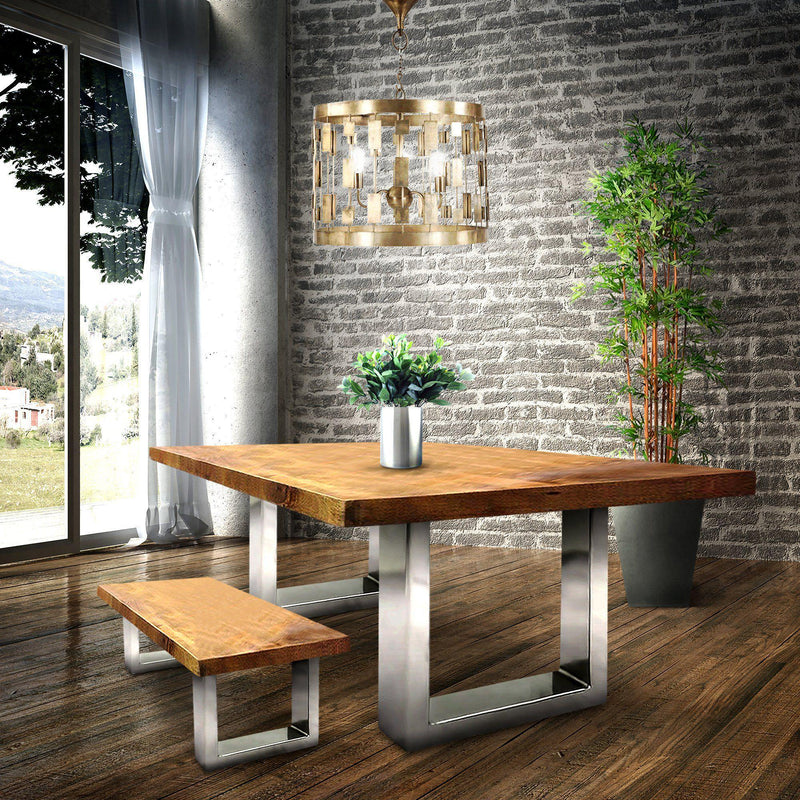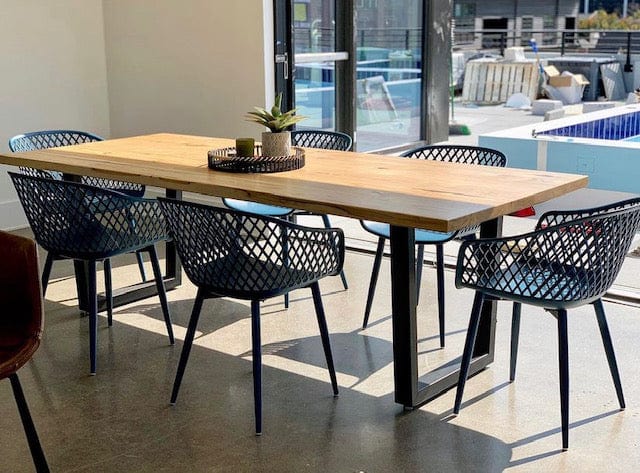From Standard to Modern: Find the Perfect Eating Room Table Legs for Your Design
The option of dining area table legs plays an essential role in specifying the general personality of your area, connecting the gap in between standard craftsmanship and modern-day aesthetic appeals. While classic layouts such as cabriole and turned legs stimulate a sense of classic elegance, modern styles like barrette and geometric choices offer a chance for striking aesthetic rate of interest. Reviewing the ideal equilibrium between these designs requires a nuanced understanding of your existing decor and personal preference. As you take into consideration these aspects, the inquiry remains: just how can you seamlessly incorporate these varied leg styles to develop an unified dining experience?
Understanding Table Leg Styles
The variety of dining-room table leg styles can substantially affect both the appearances and functionality of the space. Each leg style adds unique practical features and aesthetic components, accommodating varied style preferences and usage requirements. Understanding these styles is crucial for selecting the right table that straightens with your general interior decoration vision.
For instance, conical legs use a clean, classic look that can boost an area's sophistication, while pedestal bases provide security and maximize legroom, making them excellent for smaller sized areas. Hairpin legs, a characteristic of mid-century modern-day style, introduce a commercial style, permitting a ventilated, open feeling. Similarly, trestle legs stimulate rustic appeal, providing durable support and a sense of eternity.
Wooden legs can bring heat and appearance, whereas metal alternatives frequently share a sleek, contemporary ambiance. Ultimately, comprehending table leg designs is important for producing a natural dining area that mirrors personal style while making sure usefulness and comfort.
Standard Table Leg Options
When picking dining room table legs, standard alternatives frequently symbolize classic style and craftsmanship. These styles show an abundant heritage and a dedication to high quality, making them optimal for those who appreciate classic looks.
Among one of the most iconic conventional leg styles is the cabriole leg, defined by its graceful curved shape. This design typically includes ornamental makings and is most frequently located in Queen Anne and Chippendale furnishings. An additional preferred alternative is the transformed leg, which flaunts a collection of smooth, rounded forms that supply a traditional appearance while preserving stability.
Additionally, the straight leg, while basic, uses a strong and basic structure that can blend seamlessly with a variety of tabletop designs. For those attracted to ornate outlining, claw-and-ball feet legs evoke a sense of grandeur and can work as a stunning prime focus in any kind of eating space.
Lastly, stand bases, although not purely legs, offer an alternative traditional alternative that enables adequate legroom and can be wonderfully carved. Each of these typical leg designs adds to the overall setting of a dining-room, weding function with visual charm.

Modern Table Leg Styles
Modern table leg designs use a diverse variety of styles that stress innovative materials and tidy lines. These styles often prioritize functionality while serving as striking centerpieces within a dining helpful resources room. Minimalist appearances prevail, with legs crafted from products such as metal, glass, and crafted timber, which add to a ventilated and contemporary feel.
One prominent layout is the hairpin leg, identified by its slender, tapered framework that provides stability without frustrating the table top (dining room table legs). This style is commonly found in mid-century contemporary furnishings and can easily complement different eating table shapes. One more pattern is making use of geometric shapes, where legs might tackle asymmetrical or angular kinds, including visual rate of interest and a touch of creativity

Mixing Styles for Distinct Spaces
Frequently, property owners seek to create unique eating rooms that mirror their personal design by blending different design elements. This approach enables for the browse around these guys incorporation of varied appearances, causing an unified yet distinctive environment. Combining a rustic wooden table with streamlined, contemporary metal legs can develop an appealing contrast that raises the room's total charm.
Additionally, incorporating vintage table legs with contemporary table tops can evoke a feeling of history while keeping a contemporary sensibility. Such mixes not only display individual preference but likewise encourage creative thinking, allowing home owners to curate an area that really feels both personal and welcoming.
Color plays a critical function in this mixing process; choosing table legs that enhance or contrast with the existing color pattern can improve aesthetic passion. As an example, whitewashed legs can soften the daring of a dark check this table surface, producing a well balanced aesthetic.
Tips for Choosing the Right Legs
Choosing the right table legs is essential for accomplishing both capability and aesthetic charm in your eating space. Begin by thinking about the general design of your room. Standard setups gain from legs that feature elaborate makings or transformed layouts, while contemporary areas may require smooth, minimalist designs.
Next, evaluate the elevation and stability of the legs. dining room table legs. Basic table vary between 28 to 30 inches in elevation, so guarantee the legs match this dimension for convenience. In addition, durable products, such as wood or steel, can enhance stability and longevity
Assess the leg shape also-- choices consist of right, tapered, or stand layouts. Straight legs supply a timeless appearance, while conical legs can include a touch of elegance. Pedestal bases offer sufficient legroom and are optimal for smaller sized areas.
Final Thought
In recap, picking the optimal dining area table legs needs cautious consideration of both typical and contemporary styles. By harmonizing leg design, height, and product with the general décor, a natural and inviting atmosphere can be accomplished.
The selection of dining space table leg designs can dramatically affect both the aesthetic appeals and performance of the space. Inevitably, understanding table leg designs is vital for creating a natural eating area that mirrors personal design while guaranteeing usefulness and comfort.One of the most famous conventional leg designs is the cabriole leg, characterized by its stylish bent shape. Straight legs use a classic appearance, while conical legs can add a touch of sophistication.In summary, choosing the excellent dining space table legs calls for careful factor to consider of both traditional and contemporary styles.